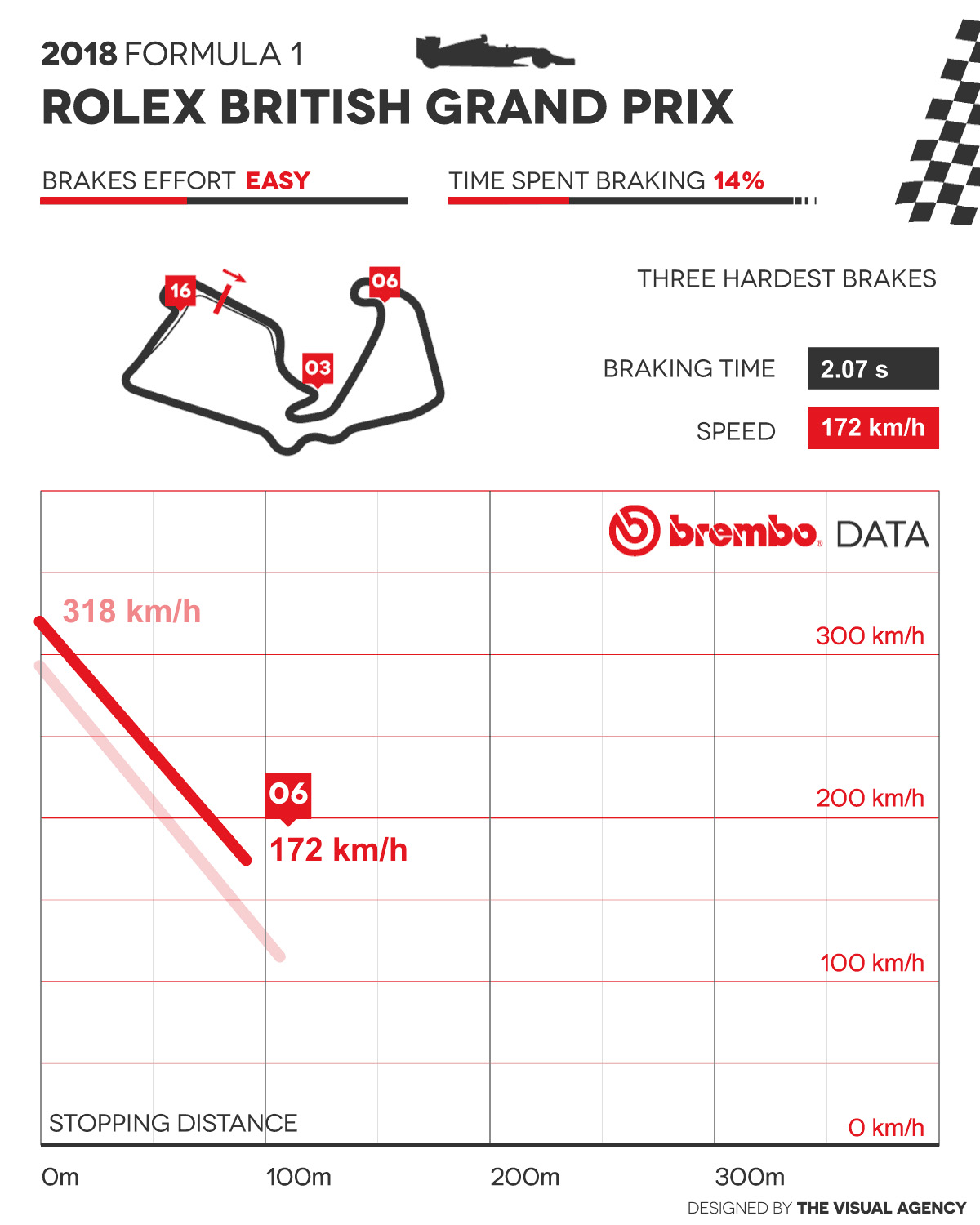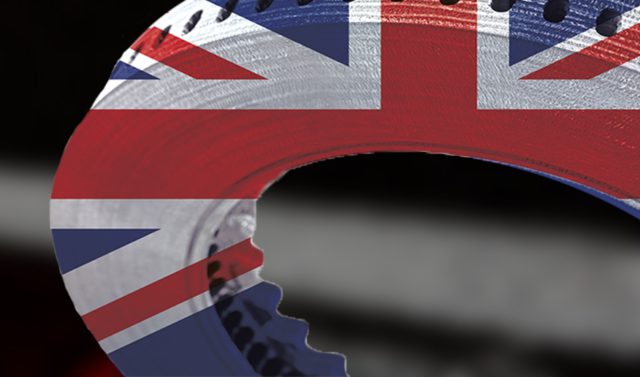Formula 1 returns to Silverstone (Great Britain) – where the World Championship started all the way back in 1950 – for the 10th appointment of the 2018 World Championship. At 52° North Latitude, the English track is the closest to the North Pole of any in the championship.
The Silverstone circuit has already hosted 51 Formula1 World Championship races, but only 8 in its current configuration. Despite the addition of several curves in the ‘70s designed to reduce speed, last year the average speed for the pole position was 244,89 km/h, outdoing the 244,57 km/h achieved in 1983.
The track is full of high-speed turns, and the single-seaters do not even need to use their brakes for 10 of the bends. There are two really intense braking sessions, both of which are the result of changes made to the track over the past 30 years.
 The low energy at play, however, may result in glazing of the friction material, in the event of rain or if temperatures dip rapidly. In such conditions, in fact, the carbon discs and brake pads may cool too much. That would no longer guarantee the friction necessary for drivers to brake the way they are used to doing.
The low energy at play, however, may result in glazing of the friction material, in the event of rain or if temperatures dip rapidly. In such conditions, in fact, the carbon discs and brake pads may cool too much. That would no longer guarantee the friction necessary for drivers to brake the way they are used to doing.
According to the Brembo technicians, who classified the 21 tracks in the World Championship, the Silverstone circuit is one of the least demanding on the brakes.
The demand on the brakes during the Grand prix at Silverstone
With every lap, drivers use the brakes 8 times. But in 3 of the bends, they rely on their brakes for less than 7 tenths of a second. All told, the braking system is in use for 11 and a half seconds in each lap, amounting to 14% of the entire duration of the race.
Even maximum deceleration is affected by the reduced need to slam on the brakes: the average value per lap is 3.6 g due to turn 10 and the curve right after, since deceleration does not even get to 3 g for either of these bends.
 All this means that only a moderate amount of energy is dissipated in braking compared to other tracks: 103 kWh, half as much as the Budapest track and Singapore.
All this means that only a moderate amount of energy is dissipated in braking compared to other tracks: 103 kWh, half as much as the Budapest track and Singapore.
From the starting line to the finish line, each driver will exert a total load of 42 metric tons on the brake pedal or 3 times the weight of a typical London double-decker bus full of passengers.
The most demanding braking sections
Of the 8 braking sections at Silverstone, 2 are classified as demanding on the brakes, 1 is of medium difficulty and 5 are light.
The most difficult corner for the braking system is at turn 3: the single-seaters arrive going 291 km/h and in just 2,43 seconds, they take it down to 113 km/h. To do this, drivers apply a load of 140 kg on the brake pedal and undergo a deceleration of 4,7 g. While braking, the vehicles travel 107 meters, less than 2 times and half the length of the new screen installed at Piccadilly Circus the last autumn.
 On the other hand, deceleration is 4.7 g at curve 16: the braking session is just a little shorter both in terms of time (2.34 seconds) and distance (106 meters), but the load on the brake pedal to drop from 283 km/h to 107 km/h is “only” 149 kg.
On the other hand, deceleration is 4.7 g at curve 16: the braking session is just a little shorter both in terms of time (2.34 seconds) and distance (106 meters), but the load on the brake pedal to drop from 283 km/h to 107 km/h is “only” 149 kg.
At Brooklands (curve 6) the single-seaters arrive at 318 km/h but enter the curve at 172 km/h after 2,07 seconds of braking. Deceleration is 4,4 g, four times that of the Jaguar XKR-S GT, which uses Brembo carbon-ceramic discs as standard equipment.
Brembo performance
Single-seaters with Brembo brakes have won 19 of the 41 Great Britain Grand prix races they took part in, including 2 GP in Brands Hatch. The team to have won most often is Ferrari, with 9 victories, but their last win was in 2011. Lewis Hamilton has won the past 4 editions with Mercedes.
Remember this outrageous move from @Max33Verstappen in 2016? ?#BritishGP ?? #F1 pic.twitter.com/9mRaa90g0g
— Formula 1 (@F1) July 5, 2018

































